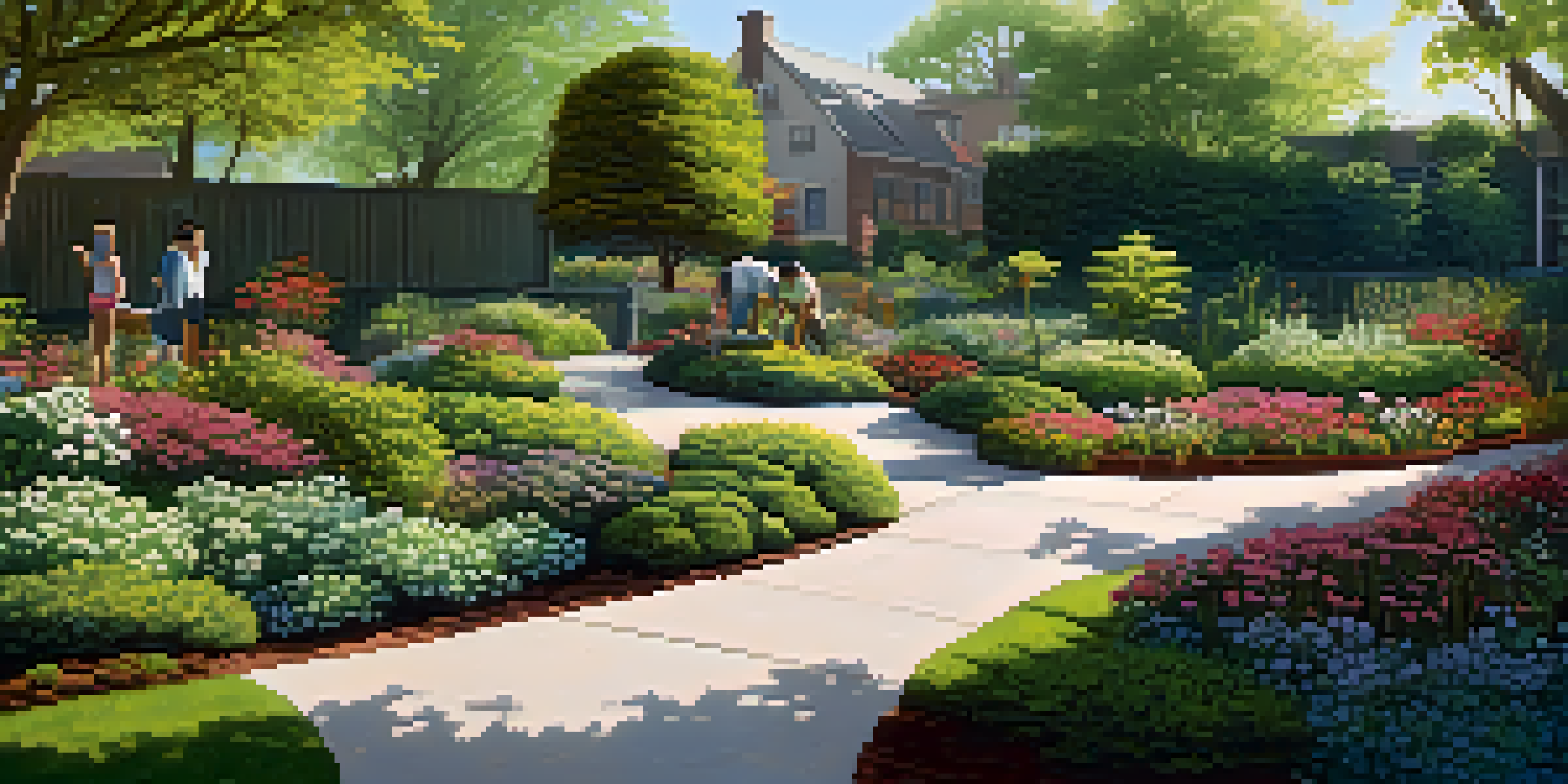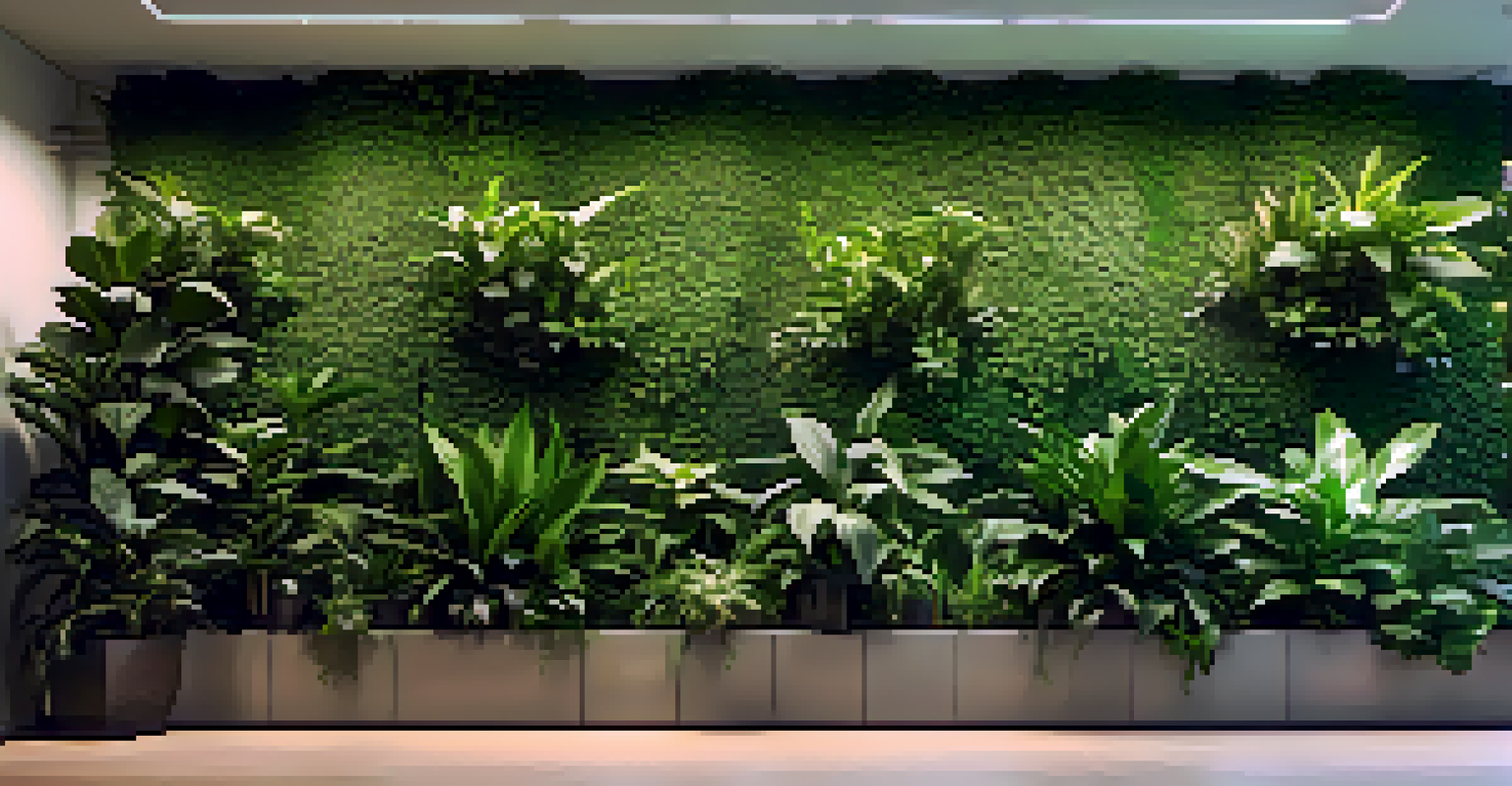Plants That Can Absorb Carbon Dioxide in Urban Areas

Understanding Carbon Dioxide and Its Urban Impact
Carbon dioxide (CO2) is a greenhouse gas that significantly contributes to climate change. In urban areas, the concentration of CO2 can be notably higher due to vehicles, industrial emissions, and energy consumption. This excess CO2 not only impacts air quality but also poses health risks to city dwellers.
The best time to plant a tree was twenty years ago. The second best time is now.
As cities continue to grow, finding ways to mitigate CO2 levels becomes essential. One effective, natural solution lies in the ability of certain plants to absorb CO2. By incorporating more greenery in urban spaces, we can enhance air quality and combat climate issues.
Plants play a crucial role in the carbon cycle. Through photosynthesis, they absorb CO2 from the atmosphere, convert it into oxygen, and store carbon in their biomass. Understanding which plants are best suited for urban environments can help us leverage this natural process more effectively.
The Role of Urban Green Spaces in Carbon Absorption
Urban green spaces, such as parks, gardens, and green roofs, serve as essential buffers against high CO2 levels. These areas not only provide a habitat for wildlife but also contribute significantly to CO2 absorption. By increasing the number and size of these spaces, cities can improve their overall air quality.

Moreover, green spaces enhance the aesthetic appeal of urban areas, making them more enjoyable for residents and visitors alike. They offer a place for relaxation and recreation, fostering a sense of community. The psychological benefits of being around nature further underline the importance of these areas.
Plants Combat Urban CO2 Levels
Incorporating more greenery in urban areas can significantly improve air quality and mitigate the effects of climate change.
Incorporating more plants into urban design is a win-win situation. Not only do they help tackle air pollution, but they also promote mental well-being and physical health among city inhabitants. Embracing green infrastructure can lead to a more sustainable future.
Top Plants for Carbon Absorption in Cities
When considering plants for urban environments, some species stand out for their exceptional CO2 absorption capabilities. For instance, the common tree species like oaks and maples not only provide shade but also have a high carbon sequestration rate. Their large canopies allow them to capture significant amounts of CO2.
Nature does not hurry, yet everything is accomplished.
In addition to trees, shrubs like junipers and hollies are also effective in absorbing carbon. These plants are well-suited for urban settings due to their resilience and adaptability. They can thrive in various soil types and require less maintenance, making them ideal for city gardens and landscapes.
Indoor plants shouldn’t be overlooked either; species like pothos and snake plants excel at purifying indoor air and absorbing CO2. Their ability to thrive in low-light conditions makes them perfect for apartments and office spaces. By strategically placing these plants, we can create healthier indoor environments.
The Benefits of Trees in Urban Areas
Trees are often referred to as the lungs of the city, and for good reason. They effectively absorb CO2 while releasing oxygen, creating a healthier atmosphere. Beyond their carbon absorption capabilities, trees provide shade, which can reduce heat in urban areas, lowering energy costs for cooling.
Moreover, trees contribute to biodiversity by creating habitats for various species. This can help support local ecosystems even in densely populated areas. Planting trees is also a long-term investment; as they mature, their carbon storage potential increases, providing lasting environmental benefits.
Trees Enhance Urban Biodiversity
Trees not only absorb CO2 but also provide essential habitats for wildlife, contributing to the overall health of urban ecosystems.
Engaging communities in tree-planting initiatives can also foster a sense of responsibility toward the environment. When people invest time and effort into planting and caring for trees, they develop a deeper connection to nature, leading to more sustainable urban practices.
Shrubs and Ground Covers: Unsung Heroes
While trees often take the spotlight, shrubs and ground covers play a vital role in carbon absorption as well. These plants can fill spaces where trees might not be feasible, such as narrow sidewalks or small gardens. They help reduce CO2 levels while also preventing soil erosion and managing stormwater runoff.
Certain shrubs, like viburnum and boxwood, are particularly effective in urban settings due to their compact size and hardiness. They can thrive in a variety of conditions, making them suitable for diverse landscapes. Additionally, ground covers like creeping thyme are low-maintenance and can provide greenery in challenging spaces.
Incorporating a variety of plant types into urban design can create a more resilient ecosystem. By diversifying plant life, we can enhance carbon absorption while also promoting visual interest and improving overall urban biodiversity.
Creating a Carbon-Absorbing Urban Garden
Starting a carbon-absorbing garden in an urban area can be both rewarding and impactful. Begin by selecting a variety of plants that thrive in your local climate and fit your available space. Consider layering plants, such as tall trees, mid-sized shrubs, and low-growing ground covers, to maximize your garden's carbon absorption potential.
Incorporating native plants is also beneficial as they tend to require less water and maintenance. They provide essential habitats for local wildlife, promoting biodiversity. Plus, native plants are often better equipped to handle urban stressors, such as pollution and compacted soils.
Community Involvement is Key
Engaging local communities in gardening initiatives fosters a sense of responsibility towards the environment and promotes sustainability.
Finally, engage your community in this gardening effort. Hosting workshops or planting days can help spread awareness about the importance of carbon absorption. Together, you can create a greener urban environment that positively impacts air quality and overall health.
Future Trends in Urban Carbon Management
As cities evolve, so too do strategies for managing carbon emissions. Increasingly, urban planners are recognizing the importance of integrating green infrastructure into city designs. This trend not only addresses CO2 levels but also enhances urban resilience against climate change effects.
Innovative solutions, such as vertical gardens and green walls, are gaining popularity in densely populated areas. These structures not only absorb CO2 but also improve insulation and reduce energy costs. As technology continues to evolve, we can expect more creative ways to utilize plants in urban settings.

Moreover, educating citizens about the role of plants in carbon management is crucial. As communities become more aware of their environmental impact, they can take actionable steps towards reducing their carbon footprints through simple lifestyle changes and increased green space initiatives.